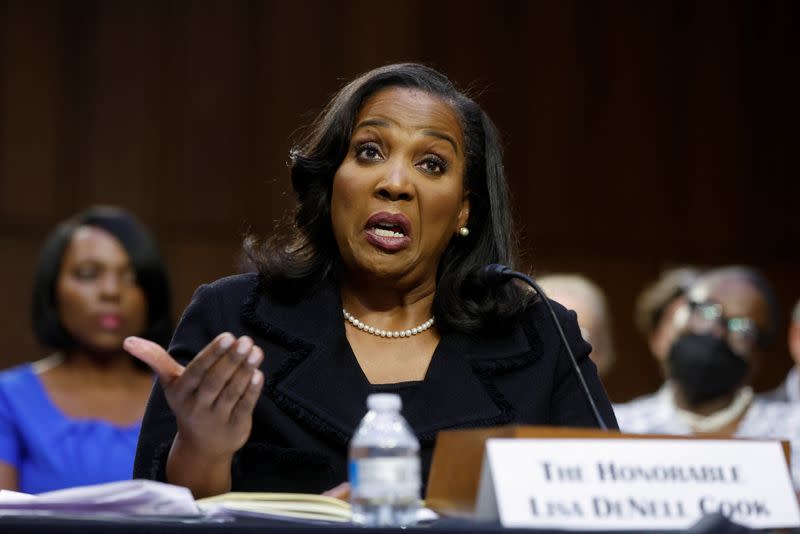Fed's Cook: need more confidence on inflation before cutting rates

(Reuters) - U.S. Federal Reserve Governor Lisa Cook on Thursday said that with inflation easing and the labor market normalizing, the risks to the economy have become "two-sided," but it's not yet time to reduce interest rates.
"I would like to have greater confidence that inflation is converging to 2% before beginning to cut the policy rate," she said in remarks prepared for delivery to Princeton University’s School of Public and International Affairs.
While it is "reasonable" to expect inflation to get to the Fed's 2% goal over time, the path toward that goal has been and could still be "bumpy and uneven," she said, citing recent stronger-than-expected readings on consumer price inflation.
At the same time, she said, the risks to the economy are no longer weighted toward excessive inflation alone. Supply chains have recovered, and so has labor supply; consumer spending has been strong, but with wage growth slowing, there are "reasons to expect some moderation going forward," she said.
There are also a raft of uncertainties ahead, including the potential for conflict in the Red Sea to impede supply more than it has so far, as well as longer-term issues including climate change, productivity growth and deglobalization.
As for monetary policy, she said, "I am now weighing the possibility of easing policy too soon and letting inflation stay persistently high versus easing policy too late and causing unnecessary harm to the economy."
Once data delivers greater confidence that disinflation is sustainable, she said, "at some point" the Fed will be able to cut rates.
"We should continue to move carefully as we receive more data, maintaining the degree of policy restriction needed to sustainably restore price stability while keeping the economy on a good path," she said.
The U.S. central bank has held its policy rate steady in the 5.25%-5.5% range since last July, and minutes of its policysetting meeting last month show most central bankers were worried about moving too quickly to ease policy.
Traders are betting the Fed will not start cutting interest rates until its June 11-12 meeting.
(Reporting by Ann Saphir and Dan Burns, editing by Deepa Babington)

 Yahoo Finance
Yahoo Finance 